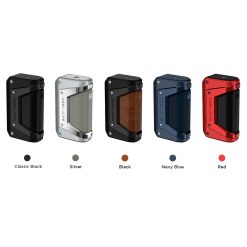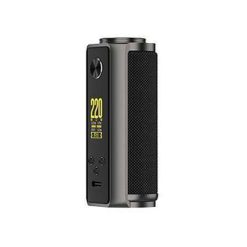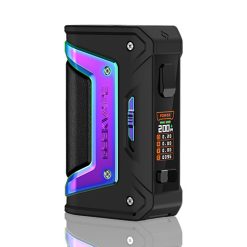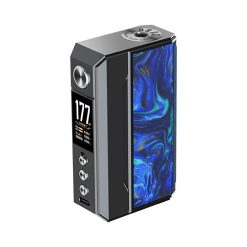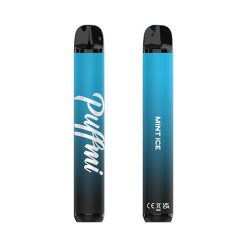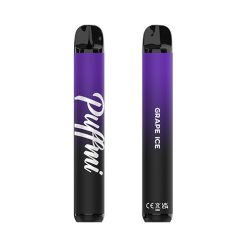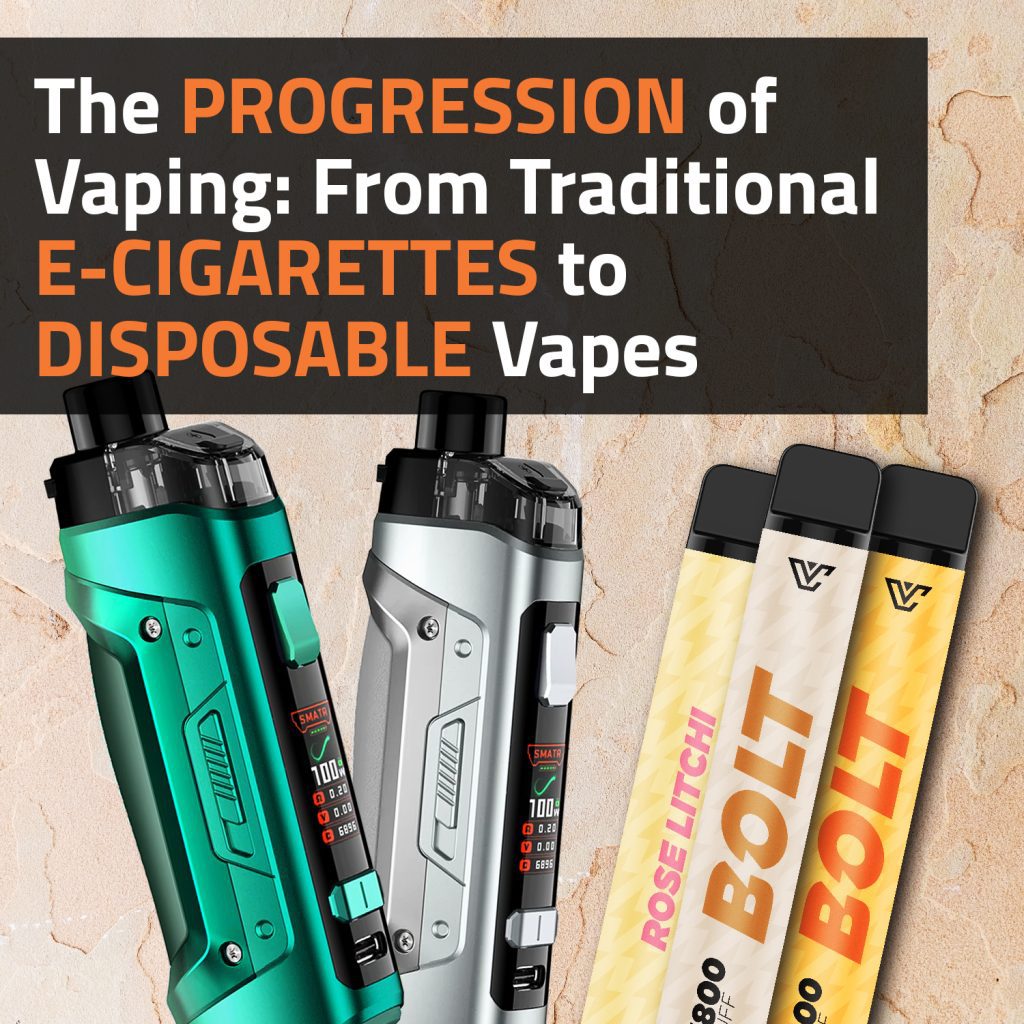The world of vaping has undergone significant transformations since its inception, evolving from traditional e-cigarettes to the emergence of disposable vapes. As technology advances and consumer preferences shift, it is crucial to understand the progression of vaping devices to make informed choices. This article aims to explore the journey of vaping, from the early days of traditional e-cigarettes to the rise of disposable vapes, highlighting the features, benefits, limitations, safety considerations, and environmental impact associated with each type.
First Generation – Cig-a-Likes
In 2006, Umer and Tariq Sjeikh made a significant advancement in the vaping market by introducing a simplified device consisting of two separate pieces. This innovative device, known as a cartomizer, eliminated the need for ultrasonic technology utilised in the Ruyan e-cigarette. The cartomizer combined the flavour cartridge and atomizer into a single unit, earning its name from this integration. It was the pioneering e-cigarette to utilise a resistance wiring element wrapped around cotton.
The initial generation of vaping devices, known as cig-a-likes, earned their name due to their resemblance to traditional cigarettes. This is also the origin of the term “electronic cigarette.” Cig-a-likes are often available at locations where cigarettes are sold and serve as an entry-level vaping option for smokers. These devices come in both disposable and rechargeable variations, typically featuring an auto-draw mechanism, meaning they produce vapour only when inhaled.
Second Generation – Vape Pens
The second generation of vaping devices introduced larger designs compared to Cig-A-Likes, focusing on enhancing performance in two key areas: battery capacity and atomizer capabilities. These devices, commonly known as vape pens, gained popularity as starter kits for individuals new to vaping. Vape pens addressed the limitations of Cig-A-Likes and offered an improved overall vaping experience. They introduced several notable features unique to their design:
- Activation button: Vape pens included a button that allowed users to turn the battery on/off and served as a firing mechanism. In contrast, Cig-A-Likes lacked a button and relied on automatic activation when inhaling.
- Safety regulation: Vape pens incorporated a chip that regulated the duration of each puff to prevent overheating. Typically, these devices would not fire for longer than 10 seconds to ensure safety during use.
- Clearomizer innovation: A significant advancement introduced with vape pens was the invention of the clearomizer. This component combined the functions of a cartridge and atomizer, providing a transparent tank to hold e-liquid while enabling easy monitoring of the liquid level.
These improvements in vape pen technology brought about notable enhancements in vapour production, battery life, and overall performance. The introduction of the activation button allowed for greater control over the vaping experience, while the clearomizer offered the convenience of visible e-liquid levels. As a result, vape pens quickly gained popularity among vapers looking for a more customizable and satisfying vaping experience.
Clearomizers
Clearomizers represented a notable advancement from cartomizers during their introduction. One key advantage was the ability to visually monitor the e-liquid level in the tank, thanks to the transparent construction. Additionally, clearomizers featured a silica wicking mechanism that efficiently delivered the e-liquid to the heating coil.
There were two main types of clearomizers: top clearomizers and bottom clearomizers. Top clearomizers had long wicks that hung from the top, ensuring the e-liquid in the tank remained saturated. However, using the e-juice down to the very bottom of the tank was challenging with top clearomizers since it required direct contact with the wick.
In contrast, bottom clearomizers had shorter wicks positioned at the bottom, allowing for improved wicking. This design provided a better user experience as it enabled the utilisation of e-juice in the tank until the last drop, without relying on direct wick contact.
It is worth noting that the atomizer in the clearomizer had a limited lifespan and needed to be replaced after a certain period, depending on usage frequency. The resistance of these coils typically ranged from 1.5 to 2.5 Ω, influencing the vaping experience in terms of vapour production and flavour intensity.
Third Generation – Mods
The third generation of vaping devices is commonly referred to as Mods within the vaping community. The term “Mods” originated from the practice of modifying flashlights into vaping devices. In contrast to cig-a-likes and vape pens, Mods represent an enhanced and personalised version of vaping devices, offering increased power and customization options. These devices are often referred to as advanced personal vaping devices, as they incorporate modern-day technology to provide an elevated vaping experience.
-
Geekvape Aegis Legend 2
R895.00 -
Vaporesso Target 200 Mod
R895.00 -
Geekvape Aegis L200 Classic MOD
R1,100.00 -
Voopoo Drag 4 MOD
R975.00
Regulated Mods Vs. Unregulated Mods
Before delving into the distinctive features of third generation devices, it is essential to understand the difference between regulated and unregulated mods. Both regulated and unregulated mods in third generation devices utilise sub-ohm coils, which refers to coils with a resistance below 1 Ω. The significance of sub-ohm atomizers lies in their ability to handle higher wattages, resulting in increased vapour production.
Regulated Mods
Regulated mods are equipped with a chip that serves as a safety mechanism by regulating the electrical current. It is important to note that while regulated mods offer safety features, having a battery-operated device does not guarantee 100% safety. Additionally, regulated mods typically provide variable voltage functionality, allowing users to adjust and customise the power output according to their preferences.
Unregulated Mods
Unregulated mods, also known as mechanical mods, do not incorporate a regulating chip to prevent overheating. Instead, these mods rely on the resistance of the coil and the user’s discretion for safe operation.
Mechanical mods are not recommended for beginner vapers, as they require a solid understanding of Ohm’s law, electrical systems, and can pose extreme dangers if the battery is pushed beyond its limits. Without the presence of a regulating chip, vapers must exercise utmost caution to prevent potential accidents or explosions. Essentially, mechanical mods consist of metal tubes housing a battery and an atomizer.
It is crucial to highlight that using unregulated mods requires advanced knowledge and a responsible approach. The inherent risks associated with these devices demand diligent adherence to safety guidelines and understanding the limits of the battery and coil combinations used.
When considering third generation devices, understanding the distinction between regulated and unregulated mods is paramount. Regulated mods offer safety features and voltage control, providing a more user-friendly experience. Unregulated mods, on the other hand, are geared towards experienced vapers who possess a comprehensive understanding of electrical systems and battery safety.
Features Of Third Generation Devices
Regulated mods, found in third generation devices, introduce several distinctive features not present in previous generation devices. These features enhance control, customisation, and overall vaping experience. Here are some key features found in regulated mods:
- Higher wattage and battery capacity: Third generation devices offer higher wattage capabilities, allowing for more power and increased vapour production. This feature is complemented by either removable or built-in batteries, providing longer battery life depending on the voltage used.
- Variable wattage and voltage: Regulated mods incorporate variable wattage and voltage functionality, enabling users to regulate the power output based on the coil’s resistance. Higher wattage settings produce hotter vapes, resulting in enhanced vapour production and e-liquid consumption. This feature empowers users to find their desired vaping experience with precise control.
- Digital display: Third generation devices feature mod screens with a digital display, offering vapers critical information such as battery life, ohmmeter readings (coil resistance), puff counter, and temperature settings. This advancement provides users with valuable data for monitoring and optimising their vaping sessions.
- Temperature control: Another innovative feature is temperature control, allowing vapers to set a specific temperature for a consistent vape. This feature enables users to control flavour intensity and prevents dry hits by automatically adjusting the power output to maintain a consistent coil temperature. Temperature control is compatible with nickel, titanium, and stainless steel coils.
- Sub-ohm tanks: High wattage devices are paired with sub-ohm tanks designed for lower resistance coils. Sub-ohm tanks hold more e-liquid compared to previous generation devices and offer a variety of coil options with different resistances. This advancement provides users with more control over their vaping experience.
- Airflow control: Regulated mods incorporate airflow control, allowing vapers to adjust the throat hit according to their preferences. Increasing airflow provides a direct-to-lung hit, while a tighter airflow facilitates a better mouth-to-lung hit. This feature empowers users to customise their vaping experience based on their desired inhalation style.
These unique features found in regulated mods enhance user control, provide valuable information, and offer more customisation options, contributing to an elevated and personalised vaping experience in third generation devices.
Disposable Vapes
Disposable vapes offer the most straightforward and user-friendly introduction to vaping, making them an ideal entry point for newcomers. As a result, the popularity of disposable vapes has skyrocketed, becoming the fastest-growing segment in the vaping market. Their convenience and ease of use make disposables a top choice for individuals seeking to quit smoking or explore a healthier alternative to traditional cigarettes.
-
Puffmi TX2000 Mint Ice
R150.00 -
Puffmi TX2000 Grape Ice
R150.00 -
Vozol Bar 1600 Iced Mango
R100.00 -
Vozol Bar 1600 Grape Ice
R100.00
The Future Of Vaping: Trends And Innovations
The vaping industry is continually evolving, and as technology advances, so do the trends and innovations shaping its future. Several exciting developments are expected to shape the landscape of vaping, catering to the preferences and demands of both experienced vapers and those new to the scene. Here are some key trends and innovations that hold the potential to revolutionise the world of vaping:
- Advanced pod systems: Pod systems have already gained significant popularity due to their simplicity and convenience. In the future, we can expect to see even more advanced pod systems with enhanced features such as larger battery capacities, adjustable airflow, temperature control, and compatibility with various coil options. Advanced pod systems will offer a highly customisable and versatile vaping experience, making them a go-to choice for vapers seeking portability and ease of use.
- Temperature control and smart technology: Temperature control features are becoming more prevalent in vaping devices. This innovation allows users to set specific temperatures for their coils, preventing dry hits and ensuring a consistent vaping experience. Additionally, smart technology integration will enable devices to connect with smartphones or other smart devices, offering data tracking, personalised vaping profiles, and firmware updates.
- Nicotine alternatives: As vaping becomes more widely accepted as a smoking cessation tool, there will likely be a growing demand for alternative nicotine sources. Nicotine salts, which provide a smoother throat hit and faster nicotine delivery, have already gained popularity and will continue to be a prominent trend. Additionally, innovations in nicotine-free e-liquids and CBD-infused vape products will cater to a broader audience seeking various vaping experiences.
- Sustainable and eco-friendly practices: With increasing awareness of environmental concerns, the vaping industry is likely to embrace more sustainable and eco-friendly practices. This includes the development of biodegradable or recyclable vape products, as well as advancements in battery technology to promote longer-lasting and energy-efficient devices.
- AI and personalisation: Artificial intelligence (AI) will likely play a role in the future of vaping, enabling devices to learn users’ preferences and adjust settings accordingly. AI-powered devices may offer personalised vaping experiences based on individual habits, flavour preferences, and nicotine intake, enhancing overall satisfaction.
- Vaping regulations and standards: As the vaping industry grows, regulators will play a more active role in establishing standards and safety guidelines. Stricter regulations will focus on product quality, labelling, and advertising to ensure consumer safety and protect against potential health risks.
The future of vaping is undoubtedly brimming with possibilities. As technology advances and consumer preferences evolve, the vaping industry will continue to innovate, offering users an array of options to suit their individual tastes and requirements. From advanced pod systems to sustainable practices and AI integration, the trends and innovations in vaping, promise an exciting and transformative journey ahead.


